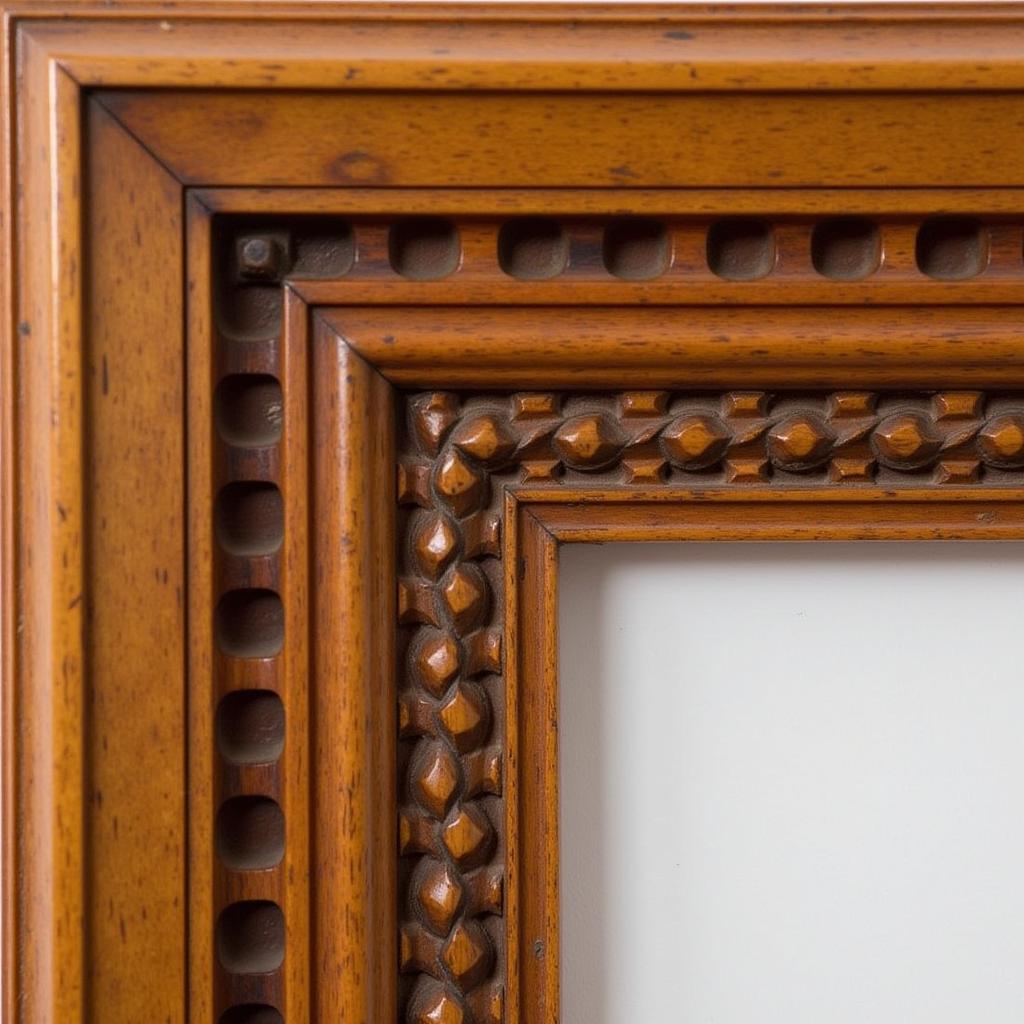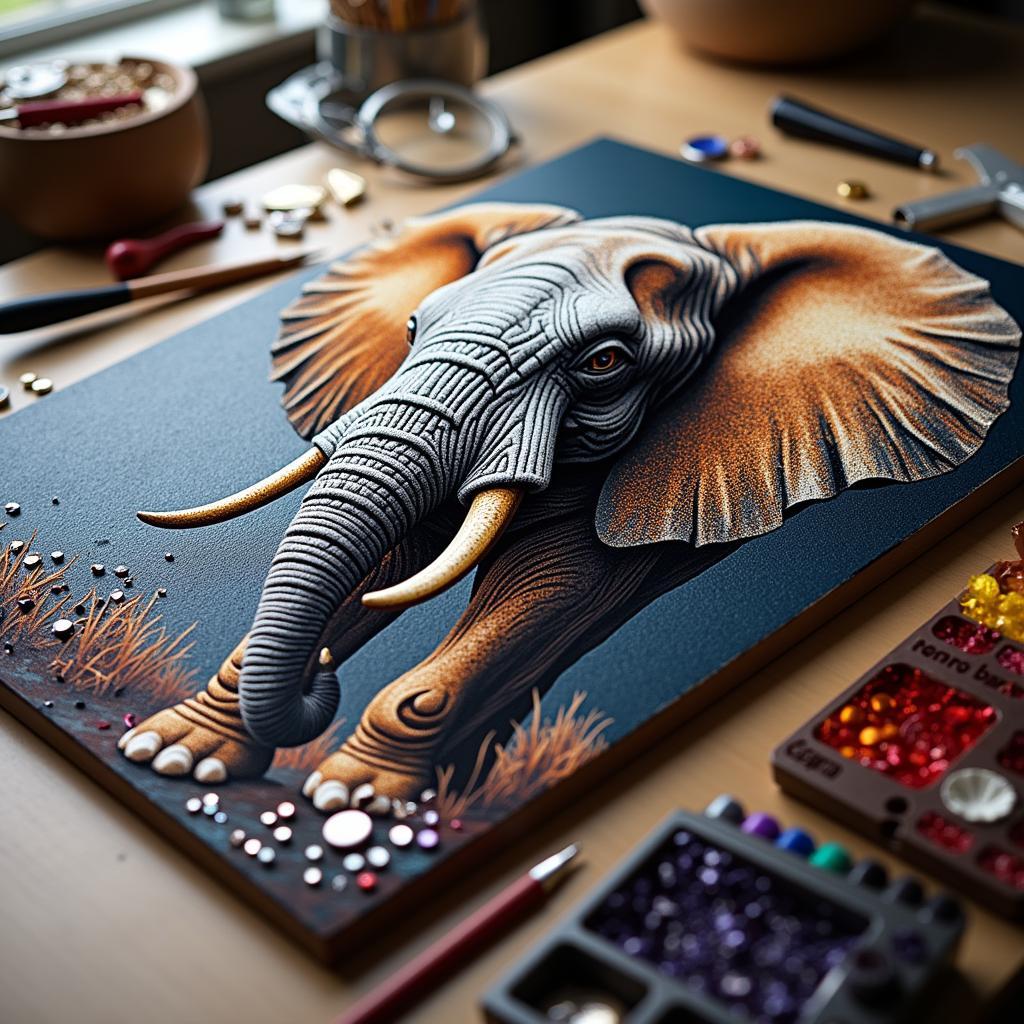Discovering the Allure of Abalone Art
Abalone Art, with its captivating iridescent beauty, draws inspiration from the ocean’s depths. This unique art form utilizes the vibrantly colored, pearlescent inner shell of the abalone mollusc to craft stunning jewelry, intricate inlays, and decorative objects. From ancient civilizations to modern artisans, abalone art continues to mesmerize with its captivating interplay of light, color, and natural form.
A Deep Dive into Abalone Shell: Nature’s Opulence
The abalone, a type of marine snail, is prized not for its meat but for its remarkable shell. The inside of the shell shimmers with an array of colors – blues, greens, pinks, purples – reminiscent of the ocean’s ever-changing hues. This iridescent effect results from the way light reflects off the shell’s layers of nacre, also known as mother-of-pearl. This unique optical phenomenon gives abalone art its captivating depth and luminosity.
A History Etched in Shell: Abalone Art Through the Ages
The use of abalone shell for decorative and ceremonial purposes dates back millennia. Archaeological evidence suggests that indigenous cultures along the Pacific coast of North America, from California to Alaska, have long incorporated abalone shell into their art and traditions. These early inhabitants crafted fishhooks, pendants, and ceremonial objects from the resilient shell, often embellishing them with intricate carvings that reflected their spiritual beliefs and connection to the sea.
Further afield, the Maori people of New Zealand have a rich history of working with abalone, known as pāua in their language. For the Maori, pāua holds deep cultural and spiritual significance. The iridescent shell, often used in jewelry and amulets, symbolizes prosperity, good health, and connection to their ancestors.
From Ocean to Art: The Making of Abalone Masterpieces
Transforming an abalone shell into a work of art requires skill, patience, and a deep respect for the natural material. The process begins with carefully harvesting the shells, ensuring the sustainability of the abalone population. Once cleaned and prepared, artisans employ various techniques to shape and enhance the shell’s inherent beauty.
Cutting and shaping the shell into desired forms is often done using specialized saws and grinders. For intricate designs, artisans utilize techniques like inlay, where small pieces of abalone are meticulously cut and set into wood, metal, or other materials. The shell can also be polished to a high gloss, further accentuating its iridescent qualities.
abalone shell wall art exemplify the stunning effects achievable by combining abalone with other materials. The contrast of textures and colors creates visually striking pieces that add a touch of the ocean’s allure to any space.
Abalone Art: More Than Just Aesthetics
Beyond its visual appeal, abalone art holds cultural significance and speaks to a growing desire for sustainable art forms. By utilizing a natural, renewable resource, artisans and collectors alike participate in a practice that celebrates the beauty of the ocean while advocating for its preservation. Each piece of abalone art serves as a reminder of the intricate connection between humanity and the natural world.
Abalone Art: A Timeless Investment
The enduring allure of abalone art lies in its ability to transcend trends. Whether incorporated into a contemporary jewelry design or a traditional Maori carving, abalone shell retains its timeless appeal. Owning a piece of abalone art is not just acquiring an aesthetically pleasing object but connecting with a rich history of craftsmanship and a deep respect for the natural world.
art deco guitar showcase how abalone inlay can elevate even musical instruments into works of art. This technique, often seen in vintage guitars, demonstrates the versatility and enduring appeal of abalone art across various artistic disciplines.
Conclusion
Abalone art, with its iridescent beauty and cultural significance, continues to captivate artists and art enthusiasts alike. From ancient adornments to modern masterpieces, the allure of the abalone shell lies in its ability to connect us with the ocean’s mesmerizing depths and inspire a sense of wonder for the natural world. As we continue to explore sustainable art forms and appreciate the beauty found in nature, abalone art remains a timeless testament to the harmonious relationship between creativity and the environment.



